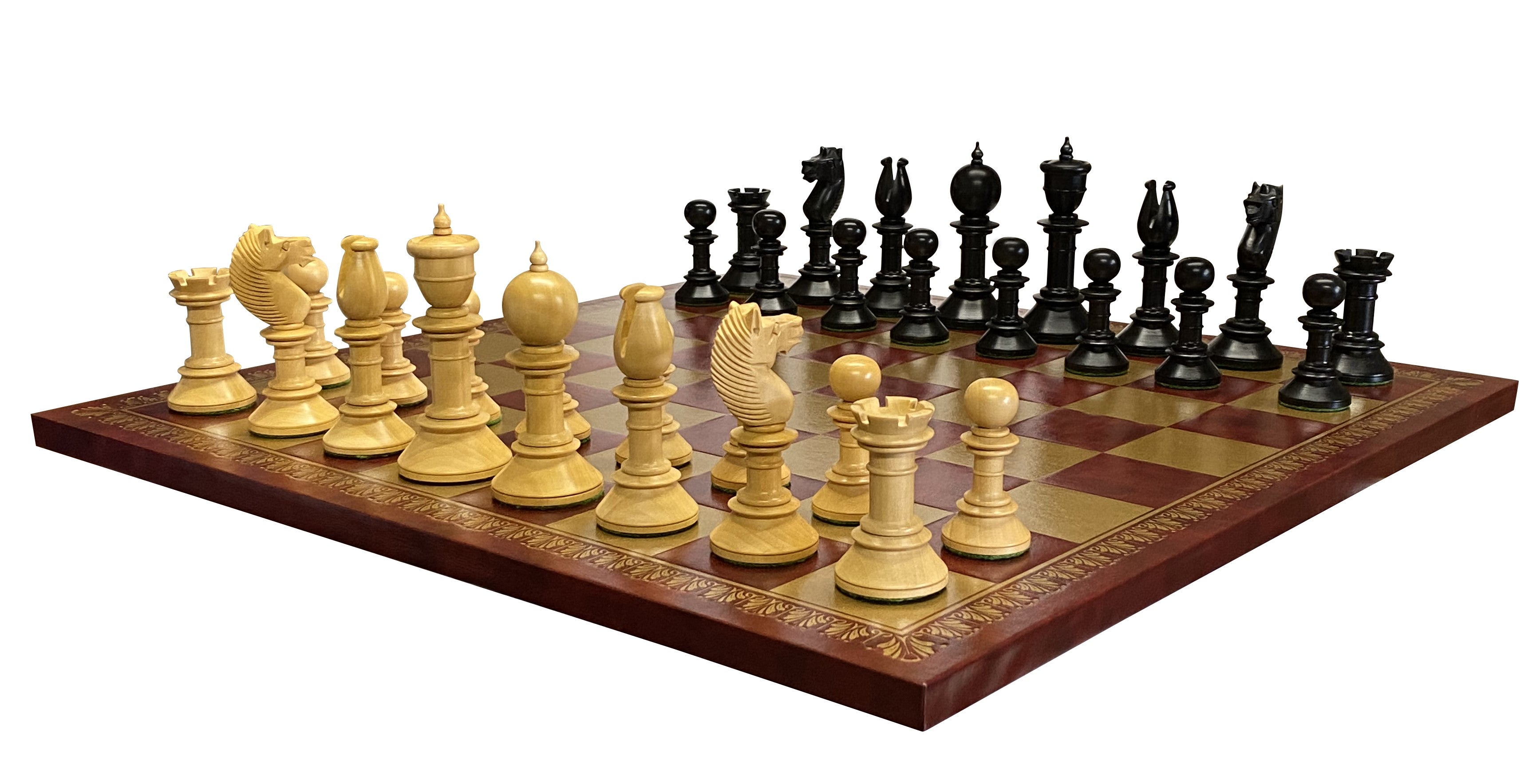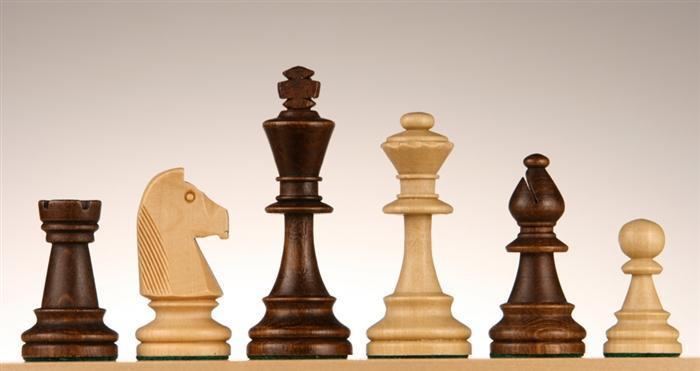Common Questions About Chess You Need to Know
Wiki Article
All About Chess: Discover the Interesting Background and Strategies Behind the Game
Chess, with its beginnings going back to 6th century India, has transformed considerably over the centuries. This game has astounded minds worldwide, showcasing the sparkle of fabulous players like Garry Kasparov and Bobby Fischer. Recognizing the ins and outs of chess, from the motions of each piece to essential techniques, exposes its depth. Yet, the question continues to be: what drives the enduring fascination with this ancient game? Exploring its history and techniques may reveal deeper insights.The Origins of Chess: A Trip With Time
Although the exact beginnings of chess continue to be uncertain, historical proof suggests that the game progressed from earlier strategies played in India around the sixth century. Referred to as Chaturanga, this early kind of chess featured items standing for infantry, cavalry, elephants, and chariots, mirroring the military techniques of the time. As Chaturanga spread out through profession routes, it adapted to different societies, causing the development of Shatranj in Persia. This alternative presented brand-new rules and piece motions, laying the foundation for contemporary chess.Chess Prodigies: Notable Figures in the Game's Background
Throughout chess history, amazing natural born players have emerged, shaping the game's landscape and motivating future generations. From fabulous champs that controlled the boards in their time to contemporary skills redefining the limitations of youth and skill, these gamers have made indelible marks on the sport. Their stories highlight not just specific radiance however additionally the advancing nature of chess as an affordable endeavor.Legendary Chess Champions
Chess has actually been shaped by the radiance of numerous famous champions whose contributions have actually left an enduring mark on the game. Numbers like Garry Kasparov, recognized for his dynamic style and unequaled critical depth, dominated the chess world during the late 20th century. Anatoly Karpov, his rival, showcased exceptional positional understanding and emotional expertise, safeguarding numerous globe titles. Bobby Fischer, an American natural born player, revolutionized chess with his unequaled skill and intense emphasis, culminating in his 1972 Globe Champion triumph. In Addition, José Raúl Capablanca's all-natural capability and endgame mastery established new requirements in the early 20th century. These champs not just mastered competitors but additionally inspired generations, shaping chess right into a worldwide phenomenon celebrated for its intellectual roughness and artistry.Contemporary Prodigies
What makes a chess prodigy genuinely impressive? The ability to comprehend complicated techniques at a remarkably young age sets them apart. Modern chess natural born players like Magnus Carlsen, Fabiano Caruana, and Alireza Firouzja have captivated target markets with their extraordinary ability. Carlsen, ending up being a Grandmaster at just 13, redefined assumptions and ascended to Globe Champion standing. Caruana, understood for his deep preparation and tactical expertise, has consistently tested the elite. Firouzja, birthed in 2003, represents the brand-new generation, combining creative thinking with unrelenting aspiration. These gamers exemplify a blend of inherent skill, strenuous training, and mental stamina, affecting the game's evolution. Their payments assure that chess stays a dynamic and lively discipline, motivating future generations of gamers worldwide.Recognizing the Chessboard: Pieces and Their Motions
The chessboard acts as the field of battle where complex approaches unfold, featuring an one-of-a-kind collection of items, each with distinct motions and functions. Consisting of 64 squares arranged in an 8x8 grid, it is home to the king, queen, rooks, knights, diocesans, and pawns. The king, one of the most important item, moves one square in any type of direction, while the queen, the most effective, can traverse any variety of squares up and down, horizontally, or diagonally. Rooks relocate straight lines, whereas diocesans slide diagonally throughout the board. Knights have an unique L-shaped motion, leaping over other items. Pawns advance one square however capture diagonally, with the choice to relocate 2 squares ahead on their first action. Each item's activity contributes to the detailed dancing of strategy and tactics, making the chessboard a vibrant phase for intellectual fight. Understanding these movements is basic for players intending to browse the intricacies of the game.
Important Strategies for Beginners: Tips to Boost Your Game
Grasping the movements of chess items prepares for creating reliable strategies. For beginners, concentrating on controlling the center of the board is vital. This allows for better wheelchair and impact over the game. Creating pieces early, as opposed to moving the very same item multiple times, can aid establish a strong position.In addition, gamers ought to prioritize king security by castling early, guaranteeing the king is stashed from dangers. Identifying tactical possibilities, such as forks, pins, and skewers, can their website supply benefits in material gain. It is additionally essential to think ahead; preparing for an opponent's actions promotes better defensive and offending play.
Finally, keeping a balanced strategy between aggressive and defensive techniques can prevent unnecessary oversights. By implementing these essential approaches, beginners can enhance their gameplay and develop a strong structure for future renovation in chess.
Advanced Strategies: Boosting Your Chess Skills
In the domain of chess, mastering sophisticated methods can greatly enhance a player's capability. Acknowledging tactical patterns, understanding endgame strategies, and understanding opening up concepts are vital aspects that elevate one's game. These components not only improve general performance however likewise foster much deeper strategic reasoning.
Tactical Patterns Recognition
Acknowledging tactical patterns is crucial for elevating chess skills to a higher degree. Gamers that understand these patterns can identify possibilities for tactical maneuvers, boosting their opportunities of success. Common patterns include forks, pins, skewers, and found strikes, each offering critical benefits when implemented efficiently. Understanding these motifs allows players to expect their opponent's steps and counter them effectively. Furthermore, examining timeless games can disclose just how masters utilized tactical patterns to safeguard success. Routine technique and evaluation of one's own games can better strengthen pattern recognition, enabling players to respond swiftly and accurately throughout matches. Eventually, refining this skill transforms the approach to chess, linking the void in between amateur and advanced play.Endgame Approaches Proficiency
Effective endgame methods can substantially influence the end result of a chess suit, often establishing the distinction between a win and a draw. Advanced players recognize the significance of item control and the utilization of pawns in the endgame. Secret methods consist of advertising pawns to queens and creating passed pawns that can progress unimpeded. Acknowledging essential positions, such as the opposition and zugzwang, is important for attaining helpful arrangements. Proficiency of endgame methods, such as king and pawn versus king circumstances, can turn prospective losses into attracts or wins. Players ought to also focus on simplifying the setting when ahead, trading items to transform material advantages right into success. Continual method and evaluation of endgame positions will certainly raise a gamer's general Continued chess abilities significantly.
Opening Concepts Understanding
Grasping endgame techniques lays a solid structure for comprehending opening up concepts. In chess, the opening stage is important as it establishes the stage for the middle game. Chess. Players must focus on control of the center, establishing pieces efficiently, and making sure king safety and security. Efficient openings typically involve relocating pawns to develop main supremacy while collaborating minor and significant pieces for height activity. The principles emphasize stagnating the exact same piece numerous times without requirement and avoiding very early queen development, which can cause vulnerability. By sticking to these fundamental strategies, players can create a solid framework that improves their tactical chances later in the game. Comprehending these opening concepts is necessary for boosting one's chess skills and accomplishing success
The Cultural Influence of Chess: Why It Matters Today
Chess, a game with origins tracing back over a millennium, continues to put in an extensive cultural influence around the world. It transcends plain enjoyment, working as a tool for education and learning, crucial thinking, and social communication. Many schools integrate chess right into their educational programs, promoting cognitive advancement and strategic reasoning amongst students. The game additionally fosters inclusivity, bringing with each other diverse communities and encouraging intergenerational connections.Chess has penetrated preferred society, inspiring literary works, movies, and even fashion. Iconic figures like Bobby Fischer and Garry Kasparov have actually come to be social icons, highlighting the game's capacity for individual and nationwide satisfaction. In the digital age, on-line systems have actually additionally equalized accessibility to chess, allowing millions to involve with the game. As culture encounters complex difficulties, chess stays relevant, supplying lessons in patience, foresight, and resilience, therefore strengthening its significance in modern culture and day-to-day live.
Frequently Asked Questions
How Has Chess Influenced Popular Culture and Media?
Chess has significantly influenced preferred society and media, showing up in films, literature, and art. It represents intellect and approach, inspiring narratives and characters while advertising themes of dispute, competition, and the human experience.What Are the Conveniences of Playing Chess for Mental Health?

Exist Different Chess Variations Played Around the Globe?
Yes, different chess variations are played globally, consisting of Bughouse, Chess960, and Three-check chess. Each alternative introduces distinct policies and approaches, offering gamers with diverse experiences and difficulties that differ from traditional chess.Just How Do Chess Engines and AI Impact Modern Chess?
Chess engines and AI significantly boost modern-day chess by supplying advanced analysis, boosting player skills, and influencing strategies. They work as training tools and competitors help, changing how players come close to the game whatsoever degrees.What Are Usual Misconceptions Concerning Chess Athletes?
Usual misunderstandings about chess players include the belief that they are all introverted brilliants, exclusively focused on technique. Chess. Actually, gamers differ greatly in individuality, history, and technique, commonly enjoying social interactions and diverse passionsReport this wiki page